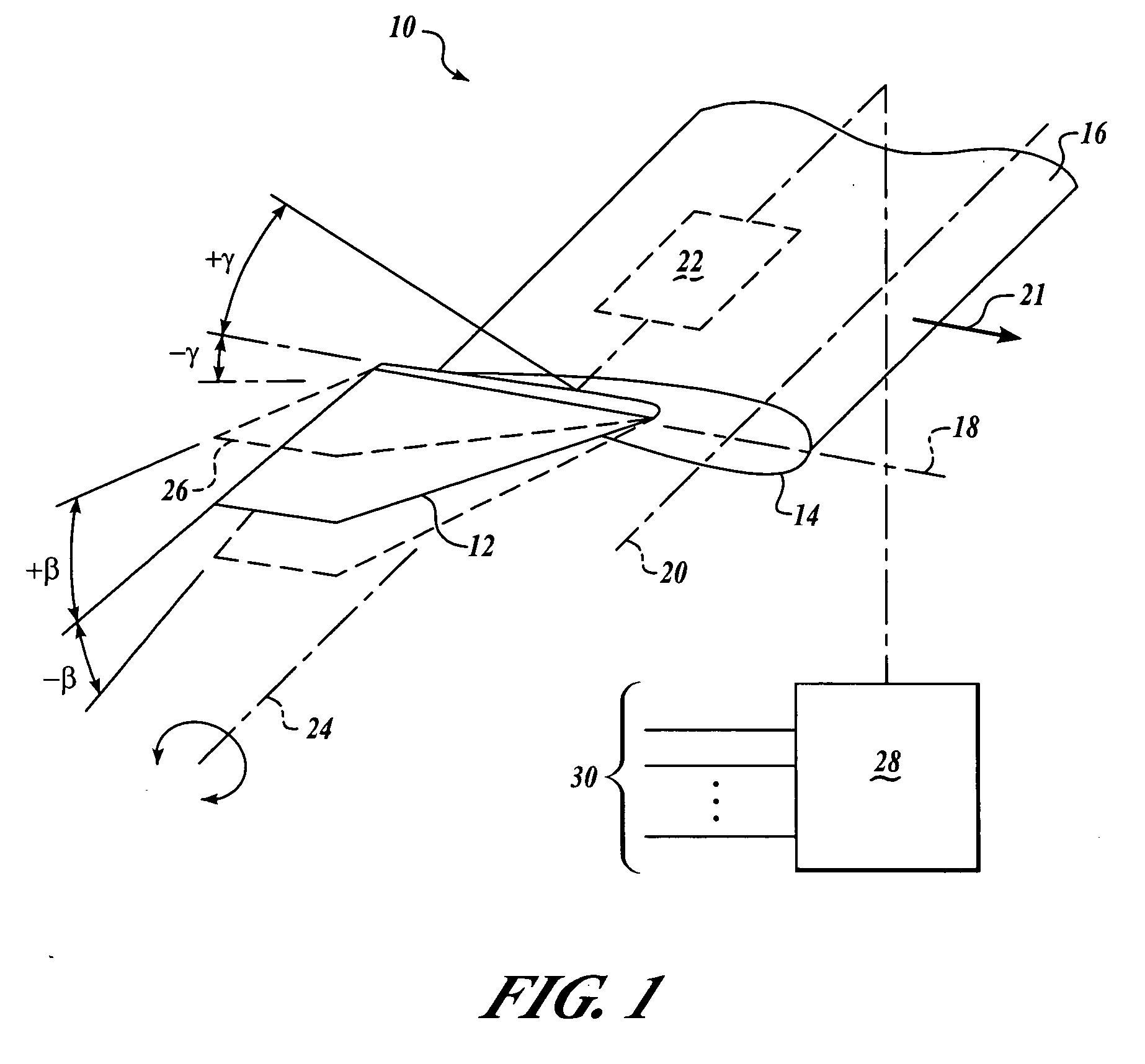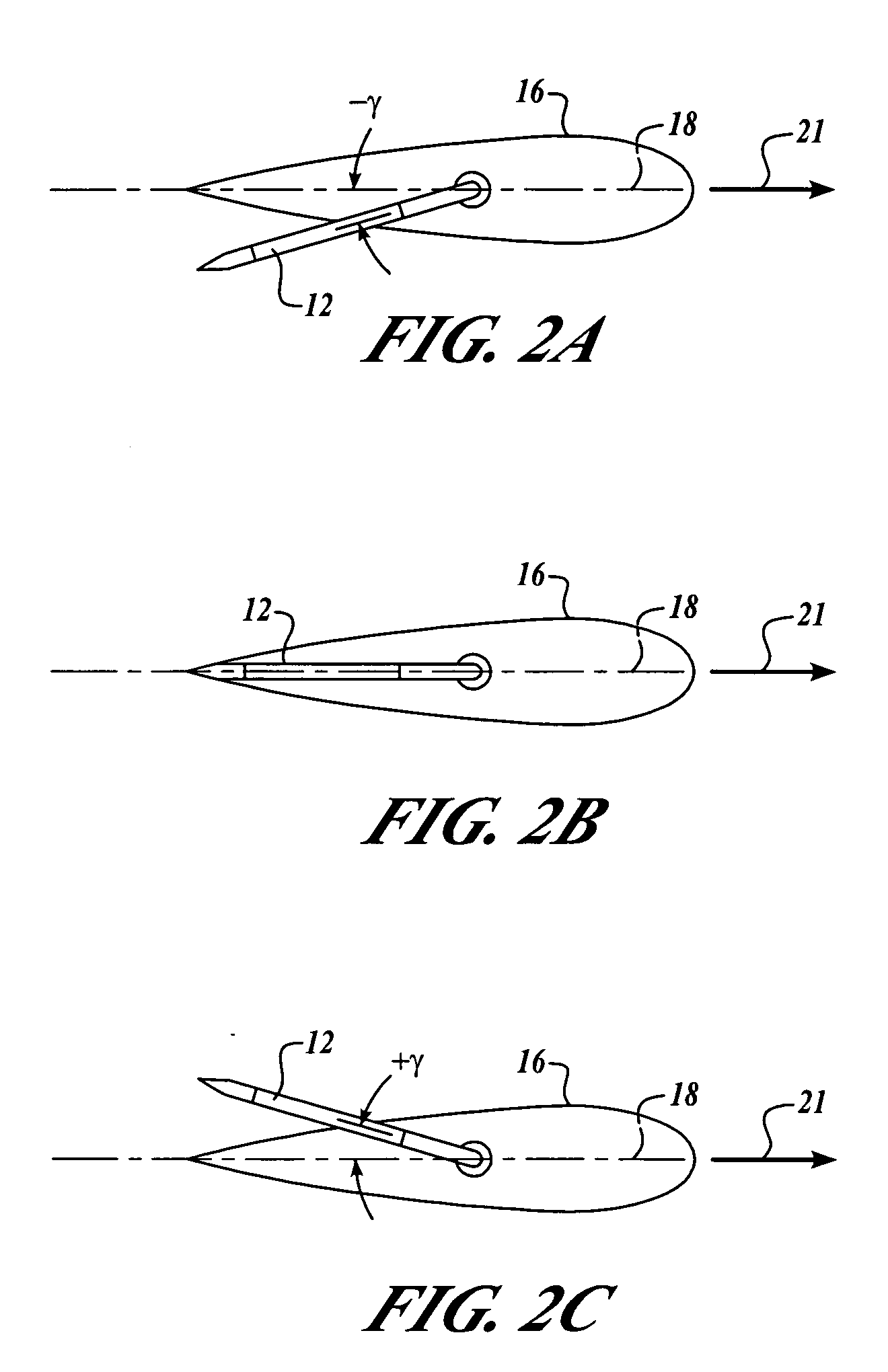System and method for improved rotor tip performance
a technology of rotor tip and rotor blade, which is applied in the direction of machines/engines, liquid fuel engines, air-flow influencers, etc., can solve the problems of increased drag on the blades of one or more rotor assemblies, unsatisfactory effects, and higher fuel consumption so as to improve the performance of rotary wing aircraft and improve the performance of rotor blades
- Summary
- Abstract
- Description
- Claims
- Application Information
AI Technical Summary
Benefits of technology
Problems solved by technology
Method used
Image
Examples
Embodiment Construction
[0015] The present invention relates to apparatus and methods for the performance enhancement of rotary wing aircraft. Many specific details of certain embodiments of the invention are set forth in the following description and in FIGS. 1 through 6 to provide a thorough understanding of such embodiments. One skilled in the art, however, will understand that the present invention may have additional embodiments, or that the present invention may be practiced without several of the details described in the following description.
[0016]FIG. 1 is a block diagrammatic, partial isometric view of a system 10 for improved rotor tip performance according to an embodiment of the invention. The system 10 includes at least one sail 12 that is coupled to a tip portion 14 of a rotorcraft blade 16 along a chord 18 of the blade 16. The sail 12 is generally aerodynamically configured, which may include a sweep back angle relative to a longitudinal axis 20 of the blade 16. Additionally, the sail 12 m...
PUM
 Login to View More
Login to View More Abstract
Description
Claims
Application Information
 Login to View More
Login to View More - R&D
- Intellectual Property
- Life Sciences
- Materials
- Tech Scout
- Unparalleled Data Quality
- Higher Quality Content
- 60% Fewer Hallucinations
Browse by: Latest US Patents, China's latest patents, Technical Efficacy Thesaurus, Application Domain, Technology Topic, Popular Technical Reports.
© 2025 PatSnap. All rights reserved.Legal|Privacy policy|Modern Slavery Act Transparency Statement|Sitemap|About US| Contact US: help@patsnap.com



